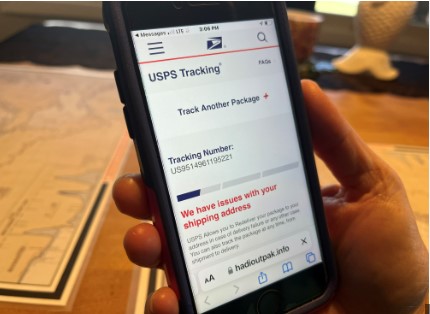Introduction
In the digital age, where communication and transactions have shifted predominantly to the online realm, scams and phishing attempts have become more sophisticated than ever before. One such scam that has gained notoriety is the us9514901185421 USPS Scam Email and spam usps tracking number. In this comprehensive guide, we will delve deep into this prevalent cyber threat, shedding light on its various aspects and providing valuable insights on how to protect yourself from falling victim to it.
The Rise of US9514901185421 USPS Scam Emails
-
Understanding the Basics
The USPS scam email is a deceptive practice wherein cybercriminals impersonate the USPS to deceive recipients. These emails often contain fraudulent tracking numbers, misleading subjects, and enticing messages that prompt individuals to click on malicious links or download harmful attachments.
The Anatomy of a USPS Scam Email
-
Subject Line Deception
Scammers employ clever subject lines that play on recipients’ emotions or curiosity. Some common subject lines include “Your Package Delivery Confirmation,” “Important USPS Notification,” or “Urgent: Your USPS Shipment Details.”
-
Bogus Tracking Numbers
These emails typically include fake USPS tracking numbers that may resemble legitimate ones. The intention is to make the email appear genuine, luring recipients into opening it.
-
Malicious Links and Attachments
Once opened, the scam email often contains hyperlinks or attachments that, when clicked, can lead to malware installation on the recipient’s device or direct them to phishing websites.
Identifying a USPS Scam Email
Red Flags to Watch Out For
- Generic Greetings
Scam emails often use generic greetings like “Dear Customer” instead of addressing recipients by their names.
- Typos and Grammatical Errors
Many scam emails contain spelling mistakes and grammatical errors, indicating a lack of professionalism.
- Unusual Sender Email Addresses
Carefully scrutinize the sender’s email address. Legitimate USPS emails should come from addresses ending with “@usps.com.”
The Consequences of Falling Victim
- Financial Loss
If you click on malicious links or download attachments from a USPS scam email, you risk financial loss through identity theft, unauthorized transactions, or ransomware attacks.
- Compromised Personal Information
Cybercriminals can obtain sensitive personal information such as your name, address, and financial details, which they can exploit for various fraudulent activities.
Protecting Yourself from USPS Scam Emails
- Stay Informed
Keep up to date with the latest scams and phishing techniques by regularly visiting the official USPS website or other trusted cybersecurity sources.
- Verify Tracking Numbers
If you receive an email with a USPS tracking number, visit the official USPS website separately and use their tracking tool to verify its authenticity.
- Use Security Software
Install reputable antivirus and anti-malware software to safeguard your devices from potential threats.
- Educate Yourself and Others
Spread awareness about USPS scam emails among friends and family to protect them from falling victim.
Conclusion
In a world where cyber threats are ever-evolving, it’s crucial to stay vigilant and informed. The USPS scam email and spam USPS tracking numbers are just one of the many tactics employed by cyber criminals. By understanding the red flags, consequences, and protective measures discussed in this article, you can better shield yourself from falling prey to such scams.
FAQs
- How do scammers obtain my email address for USPS scam emails?
Scammers often obtain email addresses through data breaches, publicly available information, or by purchasing email lists on the dark web.
- What should I do if I suspect I’ve received a USPS scam email?
If you suspect an email is a USPS scam, do not click on any links or download any attachments. Instead, report it to the USPS and your email provider.
- Can USPS scam emails contain malware on mobile devices?
Yes, USPS scam emails can carry malware that can infect mobile devices just like computers. Ensure you have antivirus protection on your mobile devices as well.
- Is it safe to provide my USPS tracking number to legitimate USPS emails?
Yes, it is safe to provide your USPS tracking number to legitimate USPS emails, as long as you have independently verified the email’s authenticity by visiting the official USPS website.
- How can I report a USPS scam email?
You can report USPS scam emails to the USPS by forwarding the suspicious email to [email protected] and your email provider’s abuse department.

